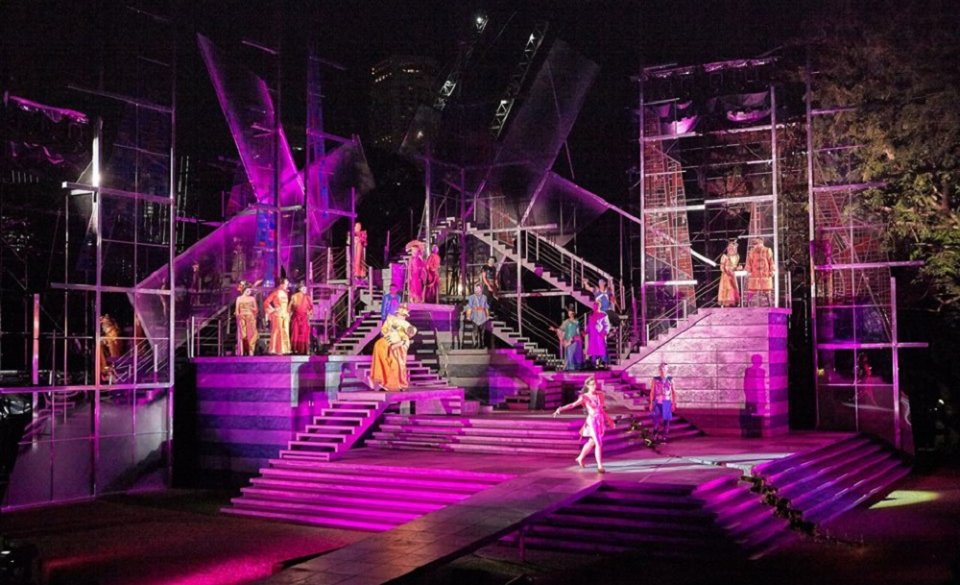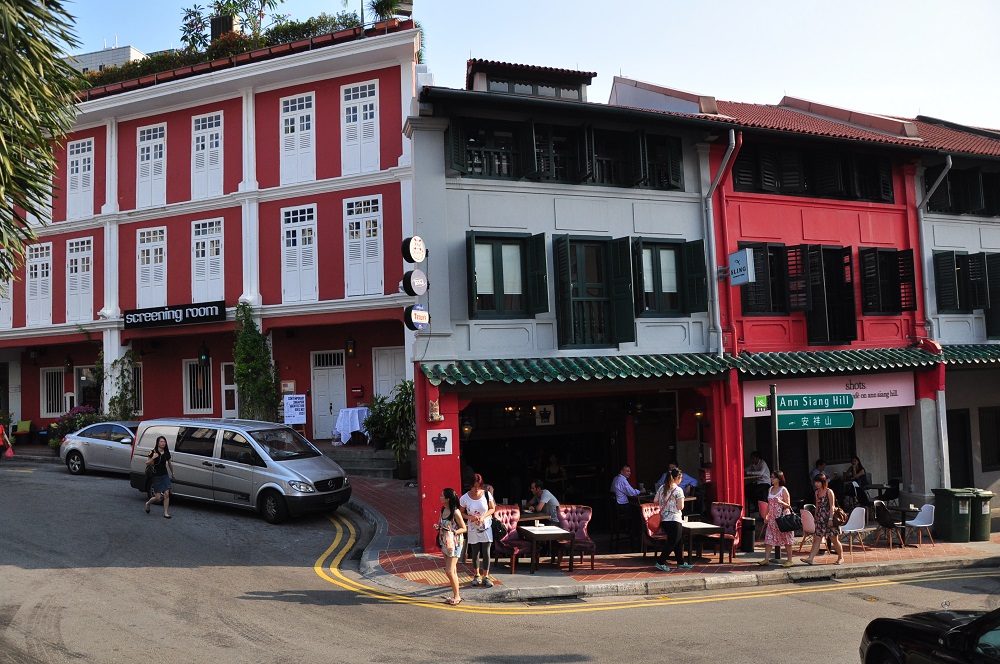Romeo died, Juliet died; but thankfully Shakespeare in the Park is alive and kicking. For a moment, however, it seemed it wasn’t to be (no Hamlet puns, thanks). Last year, the Singapore Repertory Theatre (SRT), which turns 25 this year, made the bold decision to halt their annual production Shakespeare in the Park, due to very real funding issues.
“We were just reaching a point where government funding was cut, and we lost some of our major sponsors,” shared Charlotte Nors, Managing Director of SRT. “Big companies stopped supporting the arts—I’m hoping that they’ll come back—because times were a little more challenging.”
“Financially we just didn’t have the bandwidth to do it last year; we had to make sure we could pay our salaries on time and everything,” she added.

Shakespeare in the Park
Most will be familiar with SRT’s trademark series that started with Hamlet in 1997; or at least an idea of the experience—elaborate sets and costumes constructed on Fort Canning Park, and gathering with friends to pick a spot, any spot, for a picnic dinner and a good show. Behind the scenes though, the spectacle doesn’t come cheap.
This year’s production, a modern staging of Julius Caesar with actress Jo Kukathas in the lead role, had initially been intended for last year, director Guy Unsworth having pitched the idea two years back. But 2017 also saw the widely acclaimed Forbidden City restaging jostling for finances—Nors shared that last year’s restaging cost a whopping $1 million more than the original production. “Times are harder and cost of operation across the board has gone up,” she pointed out. “We already knew we were doing one major production, and it just didn’t seem prudent to take the risk.”

Elaborate sets and costumes in Forbidden City, 2017

Kit Chan in the much anticipated reprisal of her role as Empress Dowager Cixi
SRT stages six to nine shows a year—some from their home at KC Arts Centre; others in external theaters. For their current season, there’s Julius Caesar, a co-presentation with Esplanade of the National Theatre’s The Curious Incident of the Dog in the Night-Time, The Nightingale, and a Mandarin production of Dr. Seuss’ The Cat in the Hat. The latter two are part of the company’s efforts to focus on staging children’s works. That in turn is part of a long-term strategy to attract new viewers, bring in the parent and family demographic, and grow young audiences into the next generation of theater-goers.
It’s also a marketing strategy. Nors shared that looking ahead, the theater company has been doing more work in the community and in schools, because it’s what today’s sponsors want.
“The sponsors have changed—now it’s a given that we’ll give you a good show you can take your colleagues to; but a lot of companies are now saying ‘Well we’d like to look at it through multiple tiers—how do you engage your staff, how do we support some other charities via you; how do we bring in kids from less privileged backgrounds?’ The conversations with corporates have also become more sophisticated.”
To pay or not to pay
What SRT didn’t see coming was a mismatch in the outpouring of support online and the actual financial support given, when they announced the show’s hiatus in 2017. The company launched a crowdfunding campaign in September with a goal of $100,000 that took a lot effort than expected to hit.
“I felt that, you know, we’ve had about 250,000 people come to Shakespeare in the Park; and I know 99 percent of them had a good time,” said Nors. “If everyone just gave $10 each, we would have been funded for the next three years. That didn’t happen; a lot less than I expected gave.” In the end, 150 people donated—“anything from $10 all the way up to several thousand dollars”—and SRT got the insurance it needed to continue with the show in 2018.
For Julius Caesar, which runs May 2-27, audiences can look forward to a “massive” set made to look like a modern version of the Roman Piazza. Four to five storeys high and with 24 TV screens, it’s currently being built in Malaysia—“in a rice field somewhere, because it’s too expensive to build here,” Nors said.

SRT spared no expense with the set for Romeo & Juliet in 2016
“We do try to make it a spectacle. The reason why we lose so much money is because we charge $50 for the tickets, and students get 40 percent discount. There’s no way we make money on that.”
Even with fairly priced tickets, it’s easy to point the finger at purchasing power, or lack thereof, of younger audiences. But Nors doesn’t believe so. Instead, she calls the problem at hand a matter of priorities. “I think it’s less about the money right now; so many people can afford it. You prioritize—do you go for dinner, or do you go to the theater? Do you travel over the weekend or do you go to the theater? Do you go to the cinema and go for drinks after—because that’s the same price as going to the theater. It’s all a matter of priorities. Do you Netflix or do you go to the theater?”
“It’s time—it’s your time we’re competing for, and I think it’s less about the dollars.”
Mastering their fate
In that vein, they’ve got their work cut out for them. The hike in free events around the island has become cause for “reinventing” to stay relevant—which for SRT means more summer camps, Mandarin shows to bring in a new crowd, putting on free shows in libraries, and being part of festivals like the Asian Youth Theatre Festival at SCAPE and the All In! Young Writers Festival. They have also taken to developing young talents through subsidiary companies the Little Company and Young Company.
“Our focus will always be to produce theater in a theater, because that’s what we’re good at and that’s our key business—but we also have to go where the people who aren’t in the theater now, are,” explained Nors.
Adding on, she acknowledged that while SRT started with their roots in the expat community, as the self-named Singapore Repertory Theatre, they “need to serve bigger”. “I think young people want more curated experiences. So I think we’re at a point where we’re good, but we also have to evolve.”

The cast of Julius Caesar, 2018. SRT felt that having a woman in the title role would “somehow strengthen the betrayal”.
Amid this evolution, the future of Shakespeare in the Park remains up in the air. The 51-year-old Managing Director, who has been with SRT 17 years now, said that after Julius Caesar they will be evaluating how to keep the series alive. Switching it up and staging every second year, instead of annually, is a possibility.
“We’re still passionate about what we do, so then we just work harder. You just can’t give up when things are getting tougher, right, so you just have to be smarter and think okay what are we good at, how can we do other things, how can we create other pockets of income that would make sure we don’t compromise on quality? I’d rather cut a production than do a production that isn’t up to scratch,” she said.
“I will not give it up, I really will not. This is the best thing we do; it’s the hardest, it’s where we lose the most money—but I think nothing compares to Shakespeare in the Park.”
Julius Caesar runs May 2-27 at Fort Canning Park. Tickets and pre-packed picnic baskets available here. Continue donating to keep Shakespeare in the Park alive here.





